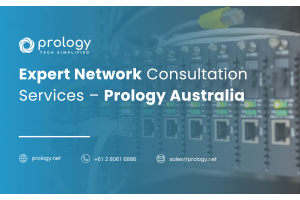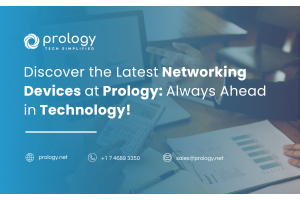Overview of 5G Network Technology and Impact on Businesses

5G network technology not only offers fast connection speeds but also creates many new business opportunities. With low latency and the ability to connect a multitude of devices, 5G will drive the development of various industries, from manufacturing and transportation to healthcare and education. Businesses can leverage 5G to improve production processes, optimize supply chains, and provide smarter services to customers.
Prology – the leading network equipment provider in Australia – proudly offers advanced technology solutions that help businesses enhance operational efficiency and achieve sustainable growth in the 5G era
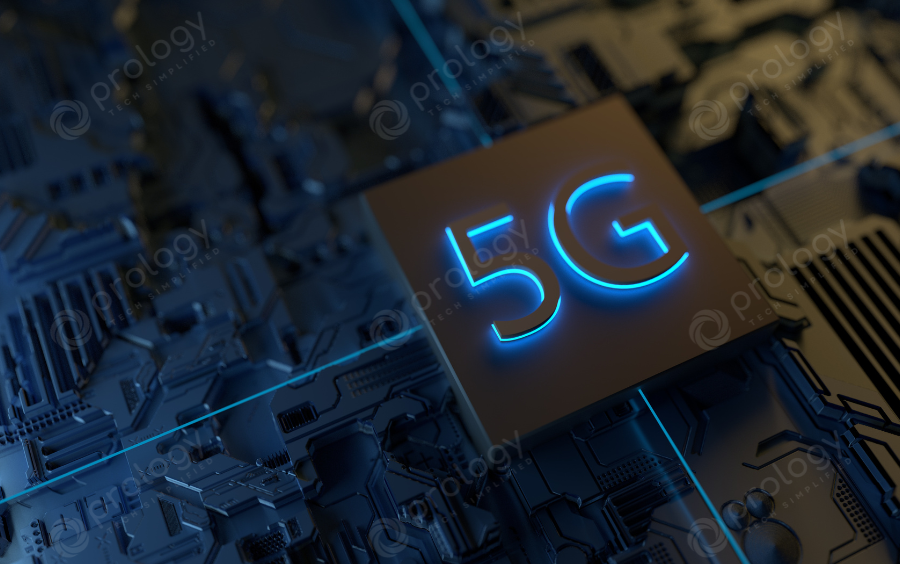
1. What is 5G Network Technology ?
A. Introduction to 5G Network
5G (fifth generation mobile networks) is the latest standard in telecommunications, inheriting and developing from previous generations such as 3G and 4G. 5G is designed to provide faster data transmission speeds, lower latency, and the ability to connect many devices at the same time. 5G data speeds are 10-100 times faster than 4G, allowing for faster downloads and smoother streaming. With 5G, you can connect billions of devices, facilitating the development of the Internet of Things (IoT), from smart sensors to smart city systems.
5G networks provide more stable and reliable connections, especially in environments with many devices using the network at the same time. It also reduces the power consumption of connected devices, extending battery life. Allows the network to be divided into independent slices, optimizing the network for different use cases. For example, one slice might prioritize health care services, while another slice is allocated to recreation.
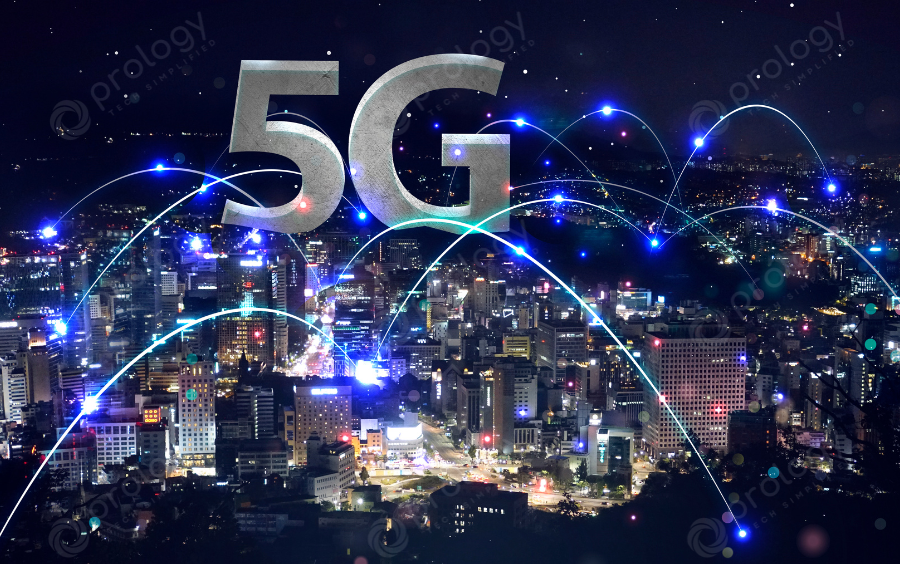
B. History of development and deployment of 5G
Research and Development Phase (2010 – 2015)
During this phase, telecommunications companies, research organizations, and academic institutions around the world began researching 5G technology. Many ideas were proposed, ranging from improving data transmission speeds to the ability to connect a large number of devices.
In 2012, 3GPP (3rd Generation Partnership Project) initiated the initial standards for 5G technology, with participation from major countries and telecommunications organizations.
Standardization Phase (2015 – 2018)
This phase focused on the development and approval of 5G standards. The 3GPP group played a key role in defining technical requirements and establishing standards for 5G technology.
- 2016: The first draft of 5G standards was introduced.
- 2017: The first technical standard for 5G, called Release 15, was completed, including specifications for data speeds, latency, and energy efficiency.
Trial Phase (2016 – 2018)
- Pioneering countries like the U.S., South Korea, and China began testing 5G technology in limited areas. Telecommunications service providers tested 5G capabilities on various frequency bands and under different conditions.
- South Korea used 5G trial networks at the 2018 PyeongChang Winter Olympics, marking a significant milestone in the testing of this technology.
Initial Deployment Phase (2018 – 2020)
- In 2018, South Korea and the U.S. launched the first commercial 5G services in major cities. China quickly followed with 5G networks being deployed in large urban centers.
- 2019: Major carriers in the U.S., South Korea, and Europe, such as Verizon, AT&T, and Vodafone, began offering 5G services to consumers.
Global Expansion Phase (2020 – Present)
- Since 2020, countries around the world, including Australia, Japan, Germany, and the European Union, have started large-scale 5G deployment. China continues to lead with a vast number of 5G base stations and 5G-enabled devices.
- 5G is not only improving mobile internet speeds but also supporting the development of the Internet of Things (IoT), artificial intelligence (AI), autonomous vehicles, and other industrial applications.
5G Deployment in Australia
In Australia, the commercial deployment of 5G began in 2020, with Telstra and Optus as the pioneering carriers. Specifically:
- 2020: Telstra launched its 5G network in May, focusing on major cities like Sydney, Melbourne, Brisbane, and Perth. Optus also built over 1,300 5G sites across major areas including Sydney, Melbourne, and Brisbane. Initial services primarily used the 3.6 GHz spectrum( RCR Wireless News)(OpenSignal).
- 2021: Both Telstra and Optus continued expanding coverage. By 2021, Telstra reached 75% of the population and provided services in over 2,700 areas nationwide. Vodafone also began rolling out its 5G network, with coverage in parts of Sydney(OpenSignal). Additionally, carriers began utilizing lower-frequency bands (700 MHz and 850/900 MHz) to improve coverage( RCR Wireless News ).
- 2022 – 2024: The expansion of 5G networks continued, with Telstra and Optus acquiring low-band spectrum through auctions to enhance coverage in both metropolitan and rural areas. Plans through 2024 also include deploying new technologies such as mmWave, aiming for even faster speeds( RCR Wireless News )( Tech Advisor WhistleOut ).
With this ongoing development, Australian carriers are significantly improving service quality and expanding 5G coverage, promising faster and more stable connectivity experiences.
2. Impact of 5G Network Technology on Businesses
A. Enhance connection capacity
5G technology significantly enhances connection speeds compared to previous generations of mobile networks. These speed improvements are achieved through several advanced technologies:
- Higher Frequency Bands: 5G uses higher frequency bands, such as millimeter waves (24 GHz and above), which can carry much more data than the lower frequency bands used by 4G.
- Expanded Bandwidth: 5G networks provide wider bandwidths, allowing for greater data transfer rates.
- Advanced Antenna Technologies: Techniques like Massive MIMO (Multiple Input Multiple Output) and beamforming are used to improve signal strength and data throughput.
Latency refers to the delay before data starts being transmitted after an instruction is given. 5G technology dramatically reduces latency, which is crucial for applications requiring near-instant response times:
- Reduced Response Time: 5G networks can achieve latency as low as 1 millisecond (ms), compared to 30-50 ms in 4G networks. This reduction is essential for real-time applications.
- Efficient Data Processing: 5G architecture includes edge computing, which processes data closer to the end user, further reducing latency.
- Improved Network Design: Network slicing and improved radio access technologies in 5G optimize performance for different types of traffic, contributing to lower latency.

B. Optimize Production Process and Management
The Internet of Things (IoT) is becoming an integral part of smart factories, helping to optimize processes and improve production efficiency.
- Device Connectivity: IoT enables real-time connectivity between a vast array of manufacturing devices, sensors, and machines. These systems continuously collect and analyze data on production activities, from monitoring machine performance to managing resources.
- Predictive Maintenance: One of the key applications of IoT is predictive maintenance. IoT sensors continuously track the condition of machinery, detecting minor issues before they become major problems, reducing downtime and maintenance costs.
- Process Optimization: Data gathered from IoT can be used to optimize manufacturing processes, from adjusting resource allocation to minimizing material waste.
Artificial Intelligence (AI) and 5G complement IoT, enabling smarter and more automated production processes.
- AI in Data Analytics: AI systems can analyze large volumes of data from IoT to identify trends and make automated decisions. For example, AI can predict when machinery will need maintenance based on historical data and current operations, improving operational efficiency.
- 5G and High-Speed Data Transmission: With faster data transfer speeds and low latency, 5G provides better support for real-time IoT applications. In manufacturing, 5G ensures seamless connectivity between IoT devices, enhancing flexibility and remote control capabilities.
- Robots and Automation: AI and 5G together enable factory robots to operate more efficiently, adjust in real time, and work in sync. These advancements not only increase productivity but also ensure safety in manufacturing environments.
5G benefits not only manufacturing but also business management, from supply chain management to customer support.
- Quick Data Access: With 5G, businesses can quickly and efficiently access and analyze data from various sources, leading to better business decisions.
- Remote Meetings and Collaboration: The high speed and low latency of 5G improve the quality of video meetings and remote collaboration. This enables businesses to connect and collaborate seamlessly with partners and customers.
- AI in Business Management: AI can assist businesses in managing resources, automating workflows, and even analyzing markets. Combined with 5G, AI can process large amounts of data faster and more efficiently.
- Smart Supply Chain Management: Thanks to IoT and 5G, businesses can monitor their supply chains in real time, detect issues like shipment delays or material shortages, and adjust accordingly.

C. Expand new business opportunities
5G not only enhances existing services but also creates entirely new services across various fields:
- Telemedicine: With low latency and rapid data transmission for images and video, 5G enables doctors to conduct remote consultations, diagnoses, and even surgeries with high precision.
- Virtual reality (VR) and augmented reality (AR): 5G accelerates the growth of VR/AR applications, from education and entertainment to online shopping. Users can participate in virtual classes, explore virtual tours, or try products before purchasing them in a more immersive way.
- Smart city solutions: 5G will support smart city initiatives such as automated traffic management, environmental monitoring, and optimized public services, improving the quality of life for residents.
- Cloud solutions and edge computing: 5G allows businesses to deploy cloud services faster and more efficiently, while also enabling edge computing, where data is processed closer to where it’s generated, speeding up processing and reducing latency.
- Smart transportation and logistics: 5G supports the real-time connection of vehicles and supply chain management, optimizing routes, reducing costs, and improving operational efficiency.
The advent of 5G not only brings faster data speeds and lower latency but also unlocks numerous business opportunities across various industries. Below are some key opportunities 5G offers:
- Development of mobile applications and services: With faster transmission speeds and the ability to handle large volumes of data, businesses can develop new mobile applications like augmented reality (AR), virtual reality (VR) games, and remote healthcare apps.
- Smart manufacturing: 5G provides the foundation for smart factories with a robust IoT system. This enhances automation, optimizes processes, and reduces downtime, creating significant business opportunities for smart manufacturing solution providers.
- Data business and analytics: With fast data transmission and processing, 5G enables businesses to exploit big data, analyze user behavior, and optimize services and products based on deeper insights.
- Autonomous vehicles and connected transportation: 5G opens opportunities for the automotive industry, especially in the development of self-driving vehicles and smart transportation solutions, where low latency and strong connectivity are crucial.
- Media and entertainment: 5G will change how users consume content, from high-quality streaming to interactive multimedia experiences like VR/AR. Companies in this sector can leverage 5G to offer new services and enhance customer experiences.

D. Challenges and Risks
While 5G offers many benefits and potential, it also faces numerous challenges that businesses, governments, and service providers need to address:
- High deployment costs: Building 5G infrastructure requires significant investment due to the need for installing more small cell towers than 4G to ensure coverage. Telecom companies face financial pressure when deploying 5G on a large scale.
- Limited coverage: Despite 5G’s fast speeds, its coverage range is shorter compared to 4G, necessitating more cell towers, especially in rural and remote areas, making it difficult to expand the network.
- Lack of compatible devices: The number of devices compatible with 5G is still limited. Businesses and consumers will need to upgrade to new devices, which can be a costly transition.
- Bandwidth management: While 5G provides wide bandwidth, managing and allocating these bandwidth resources will be a significant challenge to ensure stable service, especially with many devices connecting to the network simultaneously.
- Compatibility with existing networks: Integrating 5G with current systems like 4G and 3G is a critical technical issue. The transition between network generations requires complex coordination between hardware and software.
5G not only brings technical and cost challenges but also presents significant cybersecurity risks, as this system connects a vast number of devices and data worldwide:
- Expanded attack surface: With the rapid increase in connected IoT devices, 5G creates a much larger attack surface for hackers. IoT devices often lack adequate security measures, making them easy targets.
- Stronger DDoS attacks: 5G’s large bandwidth increases the potential for massive Distributed Denial of Service (DDoS) attacks. Attackers could use thousands of connected devices to overload the network and take down services.
- Threats from malware: IoT devices connected through 5G could become targets for malware. Once compromised, these devices can be controlled remotely, leading to more dangerous cyberattacks.
- Privacy issues: 5G networks will transmit vast amounts of personal and sensitive data. If not properly secured, user information could be collected and exploited by third parties or hackers.
- Espionage and cyberwarfare risks: Due to 5G’s importance in global technology infrastructure, there is a risk that nations could use 5G networks for espionage or cyberattacks on other countries, creating tensions in international relations.
- Supply chain security: Devices and software supplied for 5G infrastructure could become targets for supply chain attacks. If a device in the network is compromised, it could threaten the entire system.

4. Specific benefits of 5G for businesses
A. Technology and Communications
5G technology is transforming communication across various domains, enhancing how individuals and businesses connect and interact. Here’s how 5G impacts communication:
- Enhanced Mobile Connectivity: 5G provides much faster data speeds and lower latency compared to previous generations, allowing for seamless video calls, high-definition streaming, and real-time collaboration. This improvement in mobile connectivity helps users stay connected without interruptions and supports high-quality communication experiences.
- Improved Collaboration Tools: With 5G’s high-speed and low-latency capabilities, remote collaboration tools like video conferencing and cloud-based applications become more effective. Businesses can conduct virtual meetings, share large files, and collaborate in real-time with minimal delays, boosting productivity and enabling more flexible work arrangements.
- Augmented Reality (AR) and Virtual Reality (VR): 5G enables immersive AR and VR experiences by providing the necessary bandwidth and low latency. This technology enhances communication through virtual meetings and interactive experiences, making remote interactions more engaging and effective.
5G is reshaping the advertising landscape by offering new opportunities and innovations. Here’s how 5G impacts advertising:
- High-Resolution and Interactive Ads: 5G’s high bandwidth and low latency enable advertisers to deliver high-resolution, interactive advertisements. Ads can include immersive video content, augmented reality experiences, and interactive elements that engage users more effectively.
- Targeted and Personalized Advertising: With 5G, advertisers can leverage real-time data to create more targeted and personalized advertising campaigns. Enhanced data analytics allow for better understanding of user behavior and preferences, leading to more relevant and effective ads.
- Enhanced Mobile Advertising: The speed and efficiency of 5G improve mobile advertising experiences. Users can access ads quickly, view high-quality video content, and interact with advertisements seamlessly, resulting in higher engagement and conversion rates.
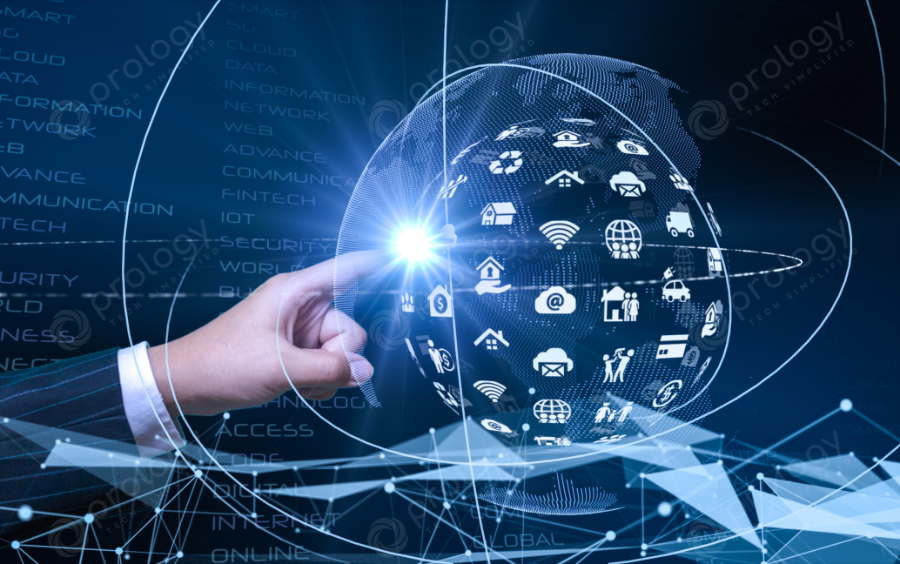
B. Manufacturing and Industry
5G is transforming factory operations by improving automation and production efficiency. Here are specific applications of 5G in factory automation:
- Industrial Robot Control: 5G provides high data transfer speeds and low latency, allowing industrial robots to operate more accurately and efficiently. Robots can communicate and coordinate quickly, performing tasks such as assembly, quality inspection, and material handling automatically.
- Predictive Maintenance: Sensors connected via 5G enable real-time monitoring of equipment and machinery. Data collected from these sensors can be analyzed to predict when maintenance is needed, helping to minimize downtime and optimize performance.
- Automated Production Processes: 5G supports the automation of production processes by connecting and synchronizing control systems. This helps to optimize workflows, improve product quality, and reduce production errors.
- Workforce Management: 5G allows for monitoring and managing worker performance in the factory through smart wearable devices. This helps to enhance safety and productivity among employees.
- Warehouse Management: Warehouse management systems within the factory can operate more effectively with 5G support. Real-time tracking of inventory and goods helps to minimize waste and reduce storage costs.
5G is enhancing supply chain management by providing fast and reliable connectivity. Here are specific applications of 5G in supply chain management:
- Real-Time Goods Tracking: 5G enables real-time tracking of goods from production to retail. Sensors attached to goods and transportation vehicles transmit data about the location and condition of items, allowing for timely management and adjustments.
- Optimized Transportation and Routing: 5G supports optimized transportation routes by providing real-time data on traffic conditions and vehicle status. This helps to adjust routes to minimize delivery times and transportation costs.
- Accurate Inventory Management: Sensors connected via 5G help manage inventory more accurately by providing continuous updates on stock levels. This helps predict demand and adjust inventory, reducing waste and improving warehouse efficiency.
- Enhanced Coordination with Partners: 5G improves coordination between supply chain partners. Stakeholders can easily share information and collaborate, from raw material suppliers to manufacturers and distributors.
- Risk Management and Safety: 5G helps monitor and manage risks in the supply chain with its fast data transfer capabilities. Sensors can detect issues such as improper storage conditions or safety risks, protecting goods and assets.
- Improved Customer Experience: With 5G, companies can provide accurate updates on order status and delivery times, enhancing customer experience and satisfaction.
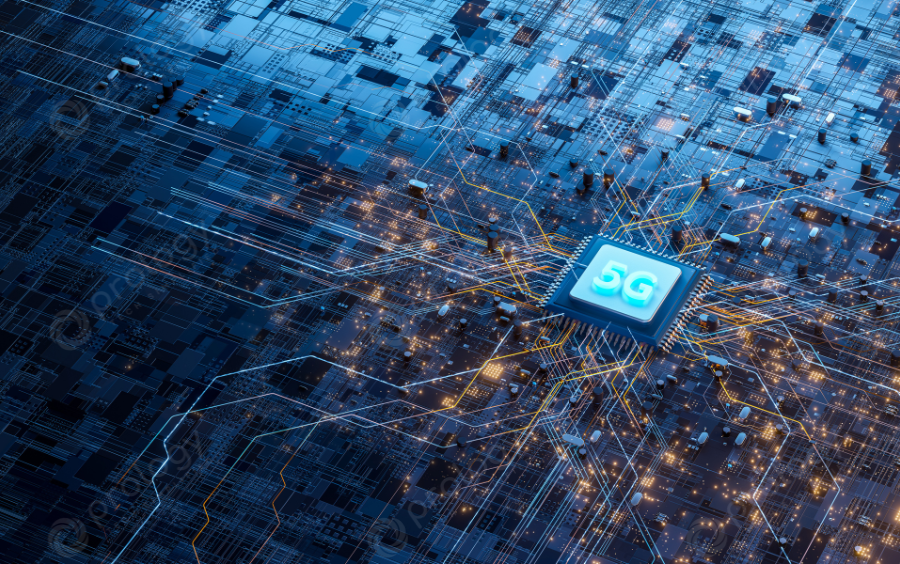
C. Medical
The integration of telemedicine and 5G technology is creating new opportunities in remote healthcare. 5G, with its high data transfer speeds and low latency, provides an ideal foundation for remote healthcare services. Here are the ways 5G is enhancing telemedicine:
- Enhanced Online Medical Consultations: 5G enables online medical appointments with high-quality video and audio, reducing latency and improving patient experience. This allows for clearer and more effective communication between doctors and patients, even during longer video consultations.
- Real-Time Diagnostic Imaging: 5G supports the rapid transmission of medical images such as X-rays, CT scans, and MRIs. This allows doctors to receive high-quality images and analyze them immediately, improving the speed of diagnosis and treatment.
- More Accurate Remote Health Monitoring: Remote health monitoring devices can continuously and accurately send data to doctors thanks to 5G connectivity. This helps doctors track patients' health in real-time and provide timely interventions.
- Remote Medication Management and Treatment: 5G allows for effective transmission of medication information and treatment plans. Patients can receive reminders about taking medication, track dosages, and get support from doctors without needing to meet in person.
- Mental Health Support and Counseling: 5G provides the foundation for mental health counseling and support services via video calls or online chats. The fast and stable connection of 5G enhances the quality of remote mental health support and counseling.
5G is expanding the capabilities of remote healthcare by providing fast and reliable connectivity. Here are specific applications of remote healthcare with the support of 5G:
- Chronic Disease Management and Remote Monitoring: 5G enables more effective management of chronic diseases from a distance. Data collected from health monitoring devices can be transmitted to doctors, improving disease management and treatment adjustments.
- Remote Surgical Procedures: 5G supports remote surgical procedures by providing stable and fast connections between surgeons and medical devices. This helps perform complex surgeries remotely with high precision.
- Data Analysis and Processing: 5G helps quickly process and analyze large amounts of medical data. Artificial intelligence (AI) and machine learning applications can analyze patient data and provide more accurate predictions and recommendations.
- Remote Customer Care and Counseling: 5G improves the ability to provide remote customer care and counseling services. Patients can easily access care and counseling services without traveling to healthcare facilities.
- Emergency Support: In emergencies, 5G provides quick and reliable connections, allowing medical professionals to handle urgent situations remotely more effectively.
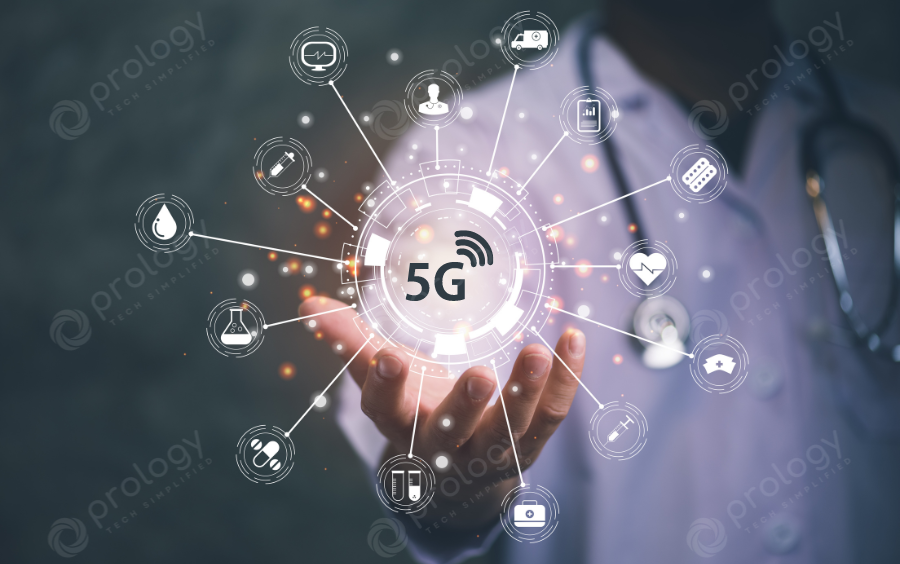
D. Education
Enhancing Online Learning Experience
- High-Speed Data Transfer and Low Latency: 5G provides ultra-fast data transfer speeds and very low latency, improving the quality of online classes and interactions. This allows high-quality video streaming without interruptions, providing a smoother learning experience for both students and instructors.
- Real-Time Interaction: With 5G, online classes can utilize real-time interactive tools such as digital whiteboards, group chat rooms, and interactive learning applications. Students can engage in discussions, ask questions, and receive immediate feedback.
- Virtual Reality (VR) and Augmented Reality (AR) Learning: 5G supports VR and AR applications in education, enabling the creation of virtual and interactive learning environments. Students can participate in virtual field trips, practice real-world scenarios, and experience educational content in a more immersive and engaging way.
Increasing Flexibility and Convenience
- Access to Learning Anytime, Anywhere: 5G allows students and instructors to access learning materials and online classes from anywhere, even in areas with weak internet connectivity. This reduces geographic barriers and enables more flexible learning.
- Enhanced Collaboration: Online collaboration tools such as shared documents, virtual team workspaces, and learning management platforms can function more effectively with 5G connectivity. This facilitates better group work and idea exchange among students.
- Efficient Time Management: Students and instructors can easily schedule and manage their learning time using 5G-supported scheduling and reminder tools. This optimizes learning and minimizes issues related to synchronization.
 5. Conclusion
5. Conclusion
Summary of Benefits and Challenges
5G offers significant benefits for businesses, including high-speed connectivity, low latency, the ability to connect numerous devices simultaneously, and opportunities for developing new services. These advantages not only enhance operational efficiency but also enable innovation and creativity, improve customer experiences, and optimize supply chain management.
However, implementing 5G also presents several challenges, such as high investment costs, network security issues, and the need to upgrade infrastructure. Businesses must prepare to manage large volumes of data, ensure compatibility with existing equipment, and train staff to fully leverage the new technology. Additionally, concerns about health, policy, and regulation must be carefully addressed.
In summary, while 5G opens up exciting opportunities, businesses need to develop strategic plans and prepare thoroughly to overcome challenges and capitalize on the benefits that 5G offers. This approach will help achieve success and sustainable growth in an increasingly advanced business environment.
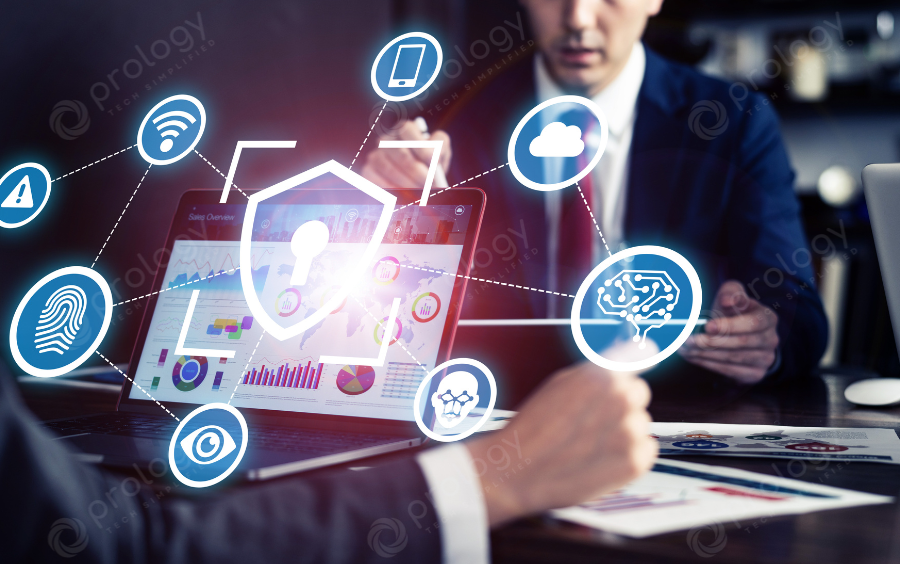
6. FAQ about 5G Network in Australia
A. What is 5G and how does it differ from previous generations of network technology?
5G is the fifth generation of mobile network technology, offering faster data speeds, lower latency, and the ability to connect numerous devices simultaneously compared to previous generations like 4G. This allows for the development of new applications and services, ranging from industrial automation to virtual reality (VR) experiences.
B. How can my business benefit from implementing 5G? Your business can benefit from 5G through:
- Faster Data Speeds: Accelerates data transfer, improving productivity and enabling real-time applications.
- Lower Latency: Reduces delay, enhancing performance for applications requiring quick responses.
- Increased Connectivity: Supports numerous devices simultaneously, ideal for IoT and smart technologies.
- Enhanced Customer Experience: Facilitates high-quality video and interactive services.
- New Service Opportunities: Enables the development of innovative products and services.
C. What should I do to prepare for implementing 5G in my business?
- Assess Needs: Determine the areas where 5G can provide the most benefits for your business.
- Invest in Infrastructure: Plan and invest in necessary upgrades for network infrastructure.
- Update Equipment: Ensure that current devices and systems are compatible with 5G or prepare for replacements if needed.
- Train Staff: Provide training for employees on using and managing new 5G technologies.
- Ensure Security: Implement security measures to protect data and systems from cybersecurity threats.
D. What are the main challenges of adopting 5G?
Challenges include high investment costs, infrastructure upgrade requirements, data security concerns, and addressing health and regulatory issues. Businesses need to prepare to address these challenges through detailed planning and appropriate preventive measures.
E. How can I ensure my business meets security requirements when implementing 5G?
- Conduct Risk Assessments: Identify vulnerabilities and security risks.
- Update and Upgrade Security Solutions: Implement new security technologies and upgrade existing solutions to protect data and systems.
- Educate and Train Employees: Train staff on best security practices and how to recognize potential threats.
- Monitor and Test Regularly: Continuously monitor network activity and conduct regular security testing to address issues promptly.
7. CTA (Call-to-Action)
Contact Prology to consult on 5G solutions for your business
Contact Prology for detailed consultation on 5G solutions tailored to your business needs. Prology offers advanced network solutions that enhance performance, security, and connectivity, helping businesses thrive in the new technological era. Prology’s team of experts will assist you from needs assessment, system design, to deployment and maintenance of 5G networks, ensuring they align with your business scale and objectives.




